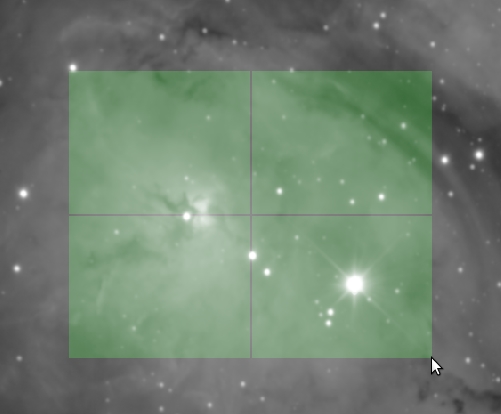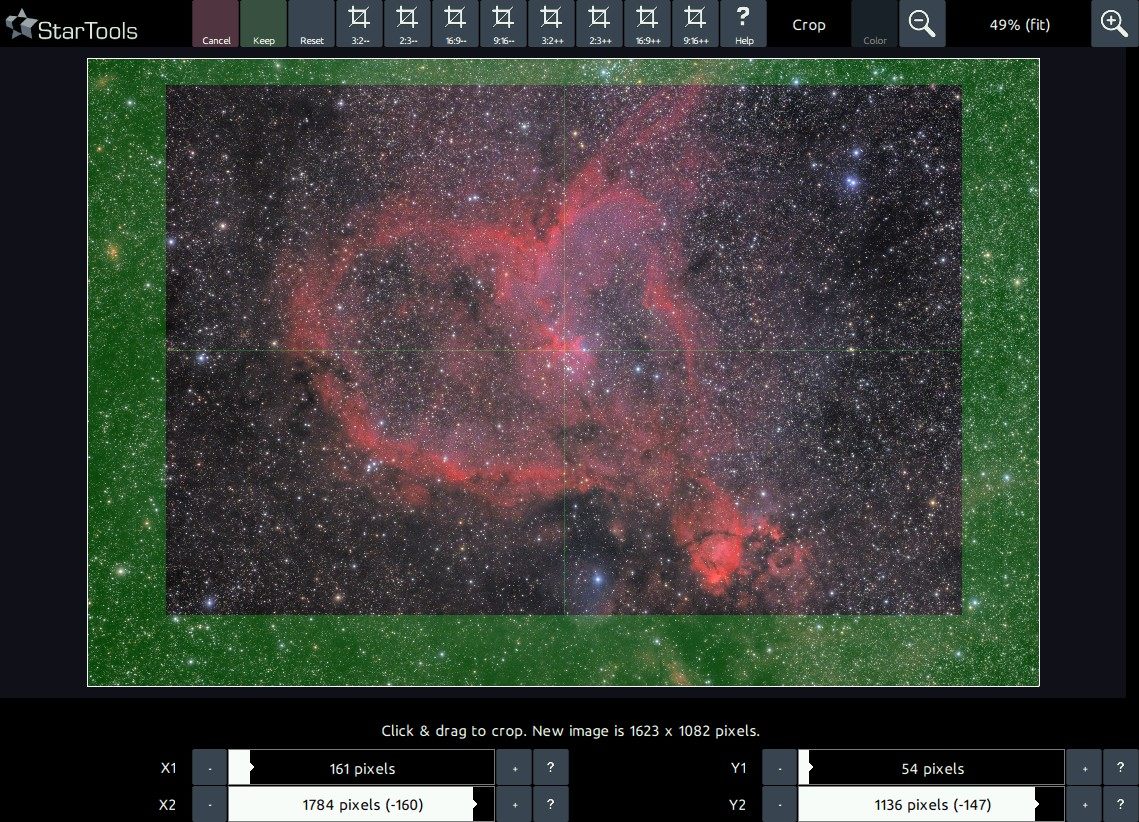Crop: Express Cropping Tool with Switchable Luminance, Chrominance and Narrowband Accent Previewing

The crop module is an easy-to-use image cropping tool with quick aspect ratio presets and switchable luminance, chrominance and narrowband accent preview modes.
The module was designed to quickly find and eliminate stacking artefacts across luminance, chrominance and narrowband accent data, as well as help with framing your object(s) of interest.
Usage

Using the crop module is fairly straightforward. The desired crop is created by clicking and dragging with the mouse the area to retain. Fine-tuning can be accomplished by changing the X1, Y1 and X2, Y2 coordinate pair parameters.
8 quick-access crops are available to quickly achieve one of four popular aspect ratios. The button names ('3:2', '2:3', '16:9', 9:16') denote the aspect ratio, while the double minus ('--') or plus ('++') signs postfix denotes their behaviour;
- Buttons with the '--' postfix will shrink the current selection to achieve the selected aspect ratio
- Buttons with the '++' postfix will grow the current selection to achieve the selected aspect ratio
A 'Color'/'NBAccent' button is available, which functions much like the 'Color'/'NBAccent' button in the Wipe module. Like in the Wipe module, it is only available when Compose mode is engaged (e.g. when luminance, chrominance and/or narrowband accents are being processed separately, yet simultaneously). The button allows you to switch the view between the luminance, chrominance and narrowband accent datasets that are being processed in parallel. The later is useful if, for example, you need to crop stacking artefacts that only exist in the chroma dataset and/or narrowband accent dataset, but not in the luminance dataset. Because chrominance data always remains linear and is never stretched like the luminance dataset, a courtesy (non-permanent) AutoDev is applied, so you can better see what is in the chrominance dataset. Likewise, a courtesy temporary AutoDev is applied to any narrowband accent data for that same purpose.
You may also be interested in...
- S. Sheriff, Spain (under Testimonials)
No nonsense, affordable astro software that just works.
- Hotkeys (under Interface)
- Setting a colour balance (under Usage)
The 'Red, Green and Blue Increase/Reduce' parameters are the most important settings in the Color module.
- Touchscreen (under Interface)
StarTools can also be entirely operated by touchscreen with all controls appropriately sized for finger-touch operation.
- Usage (under Entropy)
To only brighten the image (for example if you wish to bring out faint H-alpha, but nothing else), set this parameter to 0%/ 100%.
